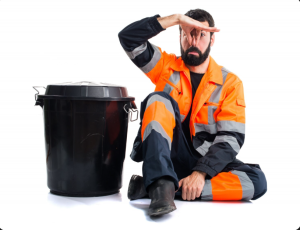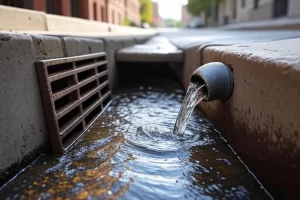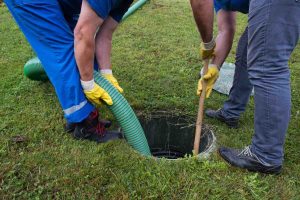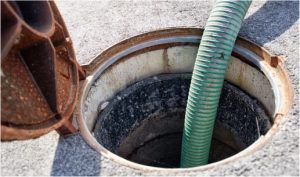
The Difference Between Sewer and Stormwater Drainage
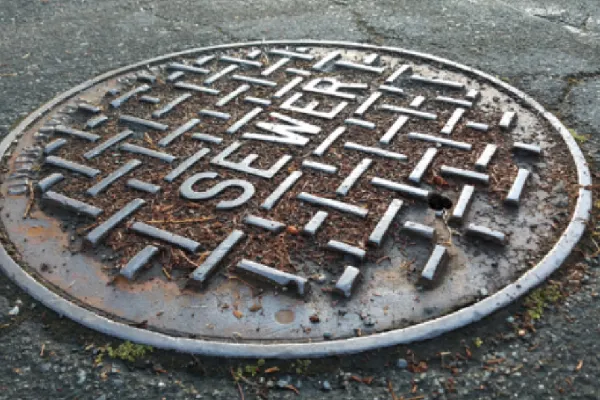
What is Sewer Drainage?
Sewer drainage systems take care of the dirty water from your home. This includes water from toilets, sinks, showers, and washing machines—basically, all the water you use inside.
In Victoria, this is usually collected by the property sewer drain, which connects to the street sewer through features such as an inspection opening, boundary trap, and an overflow relief gully (ORG).
Most metropolitan homes are on a reticulated sewer network, not a ‘sewer pit’ or tank. The system carries wastewater to a treatment plant where it’s cleaned.
How Sewer Treatment Works (Victoria):
- Collection: Wastewater from your home flows into the property sewer drain.
- Transport: Pipes carry the sewage to a treatment facility managed by your local water retailer or Melbourne Water.
- Screening: Large debris like wipes or solids is filtered out.
- Biological Treatment: Microorganisms break down organic matter.
- Chemical Treatment: Chemicals remove remaining contaminants.
- Release or Reuse: Treated water is discharged to rivers or bays under EPA licence, or reused as Class-rated recycled water.
Sewer systems are designed to handle human waste, soaps, and other household byproducts. This ensures they don’t pollute local waterways. In areas without mains sewer (rural/edge suburbs), some properties still use septic tanks. Septic tank pump outs are required to maintain these onsite systems in compliance with EPA rules.
What is Stormwater Drainage?
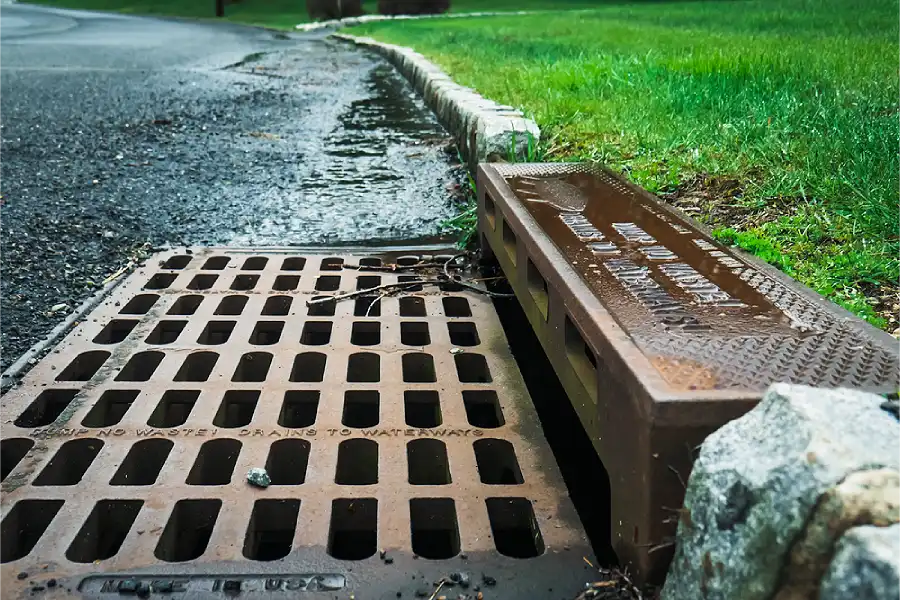
Stormwater drainage, on the other hand, is all about managing rainwater and surface runoff. When rain falls on your roof, driveway, or yard, it becomes stormwater, flowing into a stormwater drain or stormwater pit. Unlike sewage, stormwater typically doesn’t go through treatment.
Instead, it flows through grated pits, underground pipes, and sometimes open channels or basins before entering creeks, rivers, or the bay. Councils and water authorities may use water-sensitive urban design (WSUD) features like gross pollutant traps, wetlands, or raingardens to improve quality, but most household runoff is untreated.
The purpose of a stormwater system is to prevent flooding by quickly moving excess water away from properties. For example, a clogged stormwater drainage pit in your yard could lead to pooling water, turning your lawn into a muddy mess during heavy rain.
>> Pro Tip: Fit a leaf guard or debris screen over your stormwater pit—but ensure it does not obstruct flow. Councils require pits to remain clear so water can enter freely.
Key Differences Between Sewer and Stormwater Drainage Systems
While both systems involve pipes and water, their purposes, sources, and infrastructure differ significantly:
- Purpose: Sewer drainage handles household wastewater, ensuring it’s treated before release. Stormwater drainage manages rainwater to prevent flooding and erosion.
- Water Sources: Sewage comes from activities inside buildings, like using toilets and sinks. Stormwater comes from rain or water that runs off outdoor surfaces, such as roofs and streets.
- Treatment: Sewage is treated at wastewater plants under EPA regulation. Stormwater often flows directly into waterways, though councils may install WSUD features.
- Infrastructure: Sewer systems use sealed pipes with inspection points, boundary traps, and an ORG. Stormwater systems rely on grated pits, underground pipes, and in some areas, open channels to handle high volumes of runoff.
Mixing the two systems can cause serious problems. This is why understanding these differences is crucial.
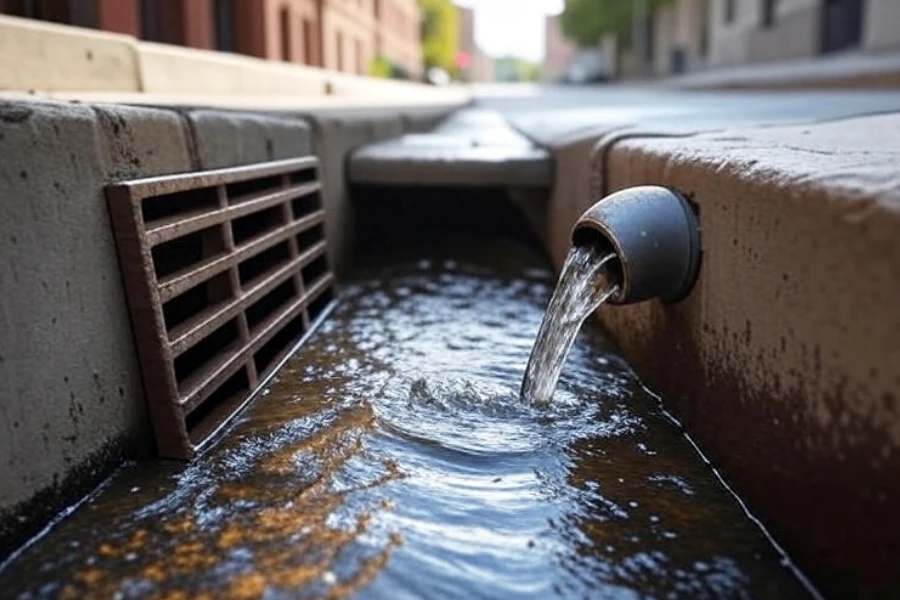
How Stormwater Enters the Sewer System - and why it's a problem
Sometimes, stormwater accidentally enters the sewer system, creating major issues. Common causes include –
- Cracked Sewer Pipes – Damaged pipes allow stormwater to seep in.
- Illegal Connections – Yard drains connected to sewer lines cause cross-contamination.
- Poor Seals – Infiltration through inspection holes or boundary traps.
This can lead to sewer overflows, where untreated sewage spills into streets or waterways. It also makes treatment plants less efficient and can cause costly sewer backups in homes.
Preventing Stormwater from Entering the Sewer System
Keeping sewer and stormwater systems separate starts with regular maintenance. Here are practical steps homeowners can take:
- Clear debris like leaves or dirt from stormwater drains and pits to ensure proper flow.
- Check your overflow relief gully (ORG): it should be at least 75 mm above ground and free of obstructions. Never cap or cover it.
- Avoid pouring grease, chemicals, or other waste into drains, as this can clog both systems.
- To prevent problems before they happen, think about hiring professionals. They can clean your sewer or inspect your stormwater system. You can also visually check your drains after a big storm, but remember that any plumbing work or alterations must be carried out by a licensed plumber in accordance with Victorian Building Authority (VBA) regulations.
For larger maintenance jobs—such as portable toilet cleaning at events, construction site waste management, or major projects liquid waste removal—it’s worth hiring licensed professionals who have the right equipment and EPA approvals.
This is the big one—don’t delay calling in the experts. A professional will inspect your system, figure out what’s gone wrong, and get things back on track. Whether it’s a blockage, a full tank, or a failed system component, they’ll have the tools and knowledge to fix it without worsening things.
Legal and Compliance Notes for Victorian Homeowners
- Plumbing Code of Australia and AS/NZS 3500 require separate sanitary and stormwater systems.
>> Sources: Standards Australia | ppigroup.com.au | Victorian Building Authority - Roof downpipes must discharge to the council-nominated Legal Point of Discharge (LPOD).
>> Sources: Merri-bek City Council | wyndham.vic.gov.au | City of Monash - Connecting stormwater to sewer (or vice versa) is illegal and can attract penalties under the Environment Protection Act 2017 (Vic).
>> Sources: manningham.vic.gov.au | Clayton Utz | EPA Victoria - Drainage work must be completed by a licensed plumber who can issue a Compliance Certificate.
>> Sources: Victorian Building Authority+1
Conclusion
Understanding the difference between sewer and stormwater drainage systems empowers homeowners to protect their properties and the environment. Sewer systems handle household wastewater with care, directing it to treatment plants, while stormwater systems manage rainwater to prevent flooding. In Victoria, keeping them separate isn’t just good practice—it’s the law. Responsible maintenance, combined with compliance with council and VBA requirements, avoids overflows, reduces environmental harm, and saves money on repairs.
Take a moment to inspect your overflow relief gully, stormwater pits, and roof drainage, or consult a licensed professional to ensure they’re in top shape. Responsible maintenance today means a cleaner, safer tomorrow.
>> Looking for Professional Stormwater & Sewer Pit Cleaning Services in Melbourne? Contact E&J Septics Today!
Who Are We?
E&J Septics is a locally owned business with over 50 years of hands-on experience in septic tank pump-outs and liquid waste management across Melbourne. We service residential, commercial, and industrial clients throughout the South Eastern Suburbs, Dandenong Ranges, and Mornington Peninsula. Our team handles everything from standard 1,800-litre domestic septic tanks to large 25,000-litre commercial systems. We also manage stormwater and sewer pit cleaning, portable toilet cleaning and transportation, and bulk waste removal for construction projects and major events.
With a trusty fleet of 17 specialized vehicles, from high-capacity trucks to units designed for tight spaces, we’re ready to tackle any site, no matter the challenge. Need routine maintenance, a one-time cleanout, or ongoing support for a big project? Contact E&J Septics to provide you with fast, professional service you can count on.
Other Articles
Think Your Septic Tank Needs a Pump Out?
Reach out now for fast, reliable service and expert solutions for all your septic tank needs.


